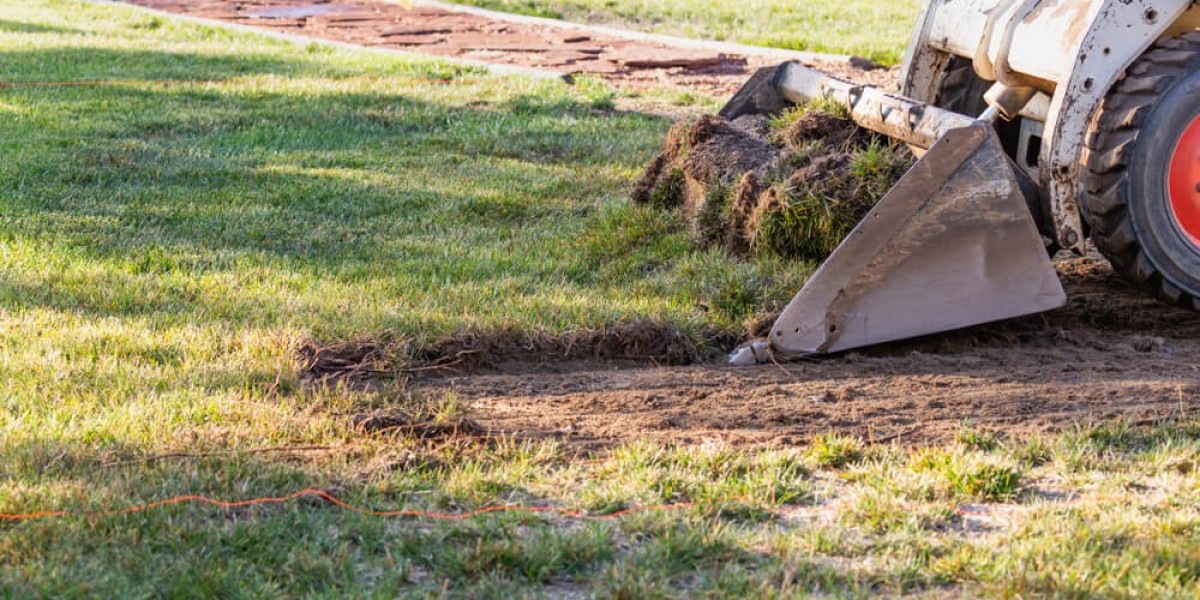If you’re planning to lay fresh sod on your property in Tilton, NH, proper preparation is key to getting a lush, healthy lawn that lasts for years. One of the most important steps before installing sod is lawn grading. Professional lawn grading services don’t just level the ground — they create the perfect foundation for new sod to thrive, improve drainage, and enhance your yard’s appearance.
In this guide, we’ll break down exactly how lawn grading services in Tilton, NH prepare your yard for new sod, step by step.
1. Why Lawn Grading Matters Before Sod Installation
Lawn grading is the process of shaping and leveling the soil so water flows away from your home and other structures. If your yard is uneven or sloped toward your house, water can pool in certain areas, leading to:
Root rot in your new sod
Pest problems from standing water
Soil erosion and nutrient loss
Foundation damage to your home
By hiring professional lawn grading services in Tilton, NH, you ensure your yard has the proper slope and smoothness for new sod to root deeply and grow evenly.
2. Step-by-Step Process Lawn Grading Services Use in Tilton, NH
Step 1: Site Evaluation and Planning
The process starts with an on-site inspection. Professionals will check:
Existing soil condition
Drainage issues
Slope direction and steepness
Low and high spots in the yard
They’ll also discuss your sod type choice because different grasses have different water and root needs. For example, cool-season grasses common in New Hampshire benefit from good drainage and nutrient-rich topsoil.
Step 2: Clearing the Area
Before grading, all existing grass, weeds, debris, and large rocks are removed. This ensures nothing interferes with the new sod’s root contact with the soil.
Typical clearing methods include:
Sod cutters to remove old turf
Rakes and shovels for debris
Hauling away excess waste
Step 3: Soil Testing and Amendment
In Tilton, NH, soil can vary from sandy loam to heavier clay. A professional lawn grading company will often recommend a soil test to check pH and nutrient levels.
Common soil amendments include:
Lime to adjust pH levels
Compost for organic matter
Sand for better drainage
Topsoil to add depth and richness
This step ensures your sod’s roots have a healthy environment to grow.
Step 4: Establishing the Correct Grade
Grading involves creating a gentle slope away from buildings, usually about 1 inch per 10 feet. This prevents water from flowing toward the foundation.
Techniques used:
Laser levels or string lines to measure slope
Skid steers or grading rakes for precision shaping
Compacting the soil to prevent settling later
Step 5: Fine Grading for a Smooth Surface
Once the general slope is set, professionals do a “fine grade” to create a perfectly even surface. This step is critical for sod because any bump or dip will be visible once the sod is installed.
Fine grading includes:
Removing small rocks and clumps
Raking the soil into a consistent texture
Light rolling to firm the surface without compacting too much
Step 6: Installing Topsoil Layer
For most Tilton, NH lawns, experts recommend adding 2–4 inches of quality topsoil before laying sod. This topsoil should be free of weeds, have good organic content, and match the grade of the rest of the yard.
Step 7: Final Soil Preparation
Before the sod goes down, the lawn grading crew will:
Water the soil lightly to settle dust
Check slope accuracy again
Ensure soil is loose enough for roots to penetrate
Step 8: Sod Installation
Once grading is perfect, sod can be installed immediately to prevent soil erosion. Sod is laid in staggered seams, pressed firmly to remove air gaps, and rolled for full contact with the soil.
3. Benefits of Professional Lawn Grading for Sod
Hiring lawn grading experts in Tilton, NH offers clear advantages:
Better Drainage: Prevents puddling and keeps sod roots healthy.
Long-Term Stability: Reduces risk of soil shifting after rain.
Smooth Lawn Surface: Ideal for mowing and walking.
Stronger Sod Growth: Roots establish faster in well-prepared soil.
4. Timing Your Lawn Grading in Tilton, NH
In New Hampshire, the best times for grading and sod installation are:
Spring (April–June): Cool weather promotes root growth.
Early Fall (September–October): Soil is still warm but temperatures are cooler.
Avoid grading during very wet conditions, as this can cause soil compaction and poor results.
5. Choosing the Right Lawn Grading Service in Tilton, NH
When hiring a company, look for:
Local experience with Tilton’s soil and climate
Proper equipment for both rough and fine grading
Positive customer reviews and before/after photos
Knowledge of sod types suited for New Hampshire lawns
Final Thoughts
Laying new sod is an investment in your property’s beauty and value — but without professional lawn grading first, your sod might not last. The right grading service in Tilton, NH will prepare your soil, improve drainage, and create the perfect surface for a green, healthy lawn.
Whether you’re fixing an uneven yard or starting fresh with new sod, remember: grading is the foundation of a great lawn. By taking the time to prepare your yard properly, you’ll enjoy a lush, vibrant landscape for years to come.








